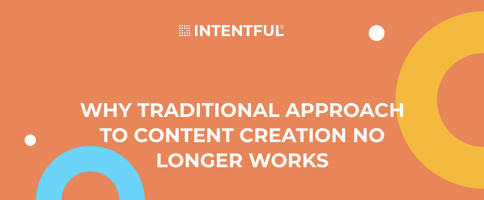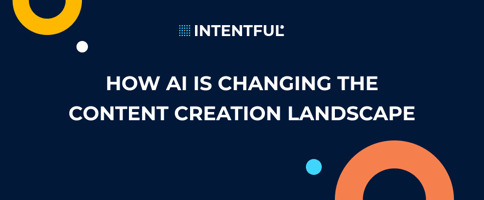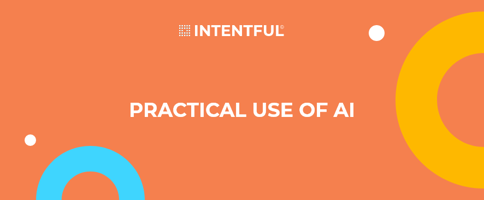In a world that is increasingly digital, marketing content creation has changed significantly....
Why AI Makes Things Up?
Imagine a world where machines weave intricate tales and create fantastical stories with just a simple command. Welcome to the fascinating realm of artificial intelligence where the line between fact and fiction is blurred. In this blog post, we'll explore this intriguing world and unravel why things are sometimes made up there. Get ready to dive into a thrilling journey as we uncover the creative genius of AI.
Generative AI as a Creative Entity
In other articles, we have already shared how we trained artificial intelligence—for an Oxford Union debate—to speak like famous personalities and argue on the motion "This house believes most of the world’s content will soon be created by AI." (You can read about that in length here. That was in 2021, so let’s test AI's creativity again. We asked the GPT4-based model to create a short poem in the style of William Wordsworth.
After processing the input, the model came up with the following lines:
In verdant fields where daffodils arise,
Beneath the watchful gaze of azure skies,
A quiet grace, a harmony aligns,
The poet's heart with nature's sweet designs.
Upon the lake, the mirrored world reveals,
The secrets held in silent hills and dales,
And Wordsworth's muse, in whispered verses, weaves,
The golden threads of memory that ne'er leaves.
Embrace the beauty of this transient life,
In gentle thoughts, beyond our worldly strife,
For in the lines of Wordsworth's verse, we find,
A lasting peace, a refuge for the mind.
Judge for yourself, if you’re a Wordsworth aficionado, if AI has managed to imitate the style of the great poet.
We have also tried to understand if the AI model has a sense of humor. For this purpose, we typed the following input:
“Parody the famous fragment by Dickens: ‘It was the best of times, it was the worst of times, it was the age of wisdom, it was the age of foolishness, it was the epoch of belief, it was the epoch of incredulity, it was the season of light, it was the season of darkness, it was the spring of hope, it was the winter of despair.’”
The AI did its best and replied as follows:
It was the tastiest of meals, it was the blandest of meals, it was the age of gourmet, it was the age of junk food, it was the epoch of organic, it was the epoch of artificial, it was the season of feasting, it was the season of fasting, it was the buffet of abundance, it was the famine of scarcity.
As we continue to explore the capabilities of AI, we can only imagine what else it can create in the future. Perhaps we will see a new generation of poets who will have to experiment with language so that artificial intelligence won’t be able to imitate them. Or maybe stand-up comics will be replaced by the machines.
Images
Artificial intelligence can even create visual art. Can it, though?
We typed the prompt, “Create a picture of a man and a woman puzzling over AI's making things up. The picture has to be in the style of Thomas Gainsborough.”
Here is what the model has drawn.
Now, you don’t have to be an art critic to conclude, with the utmost confidence, that this is not authentic Gainsborough. That man lived in the 18th century and couldn’t have drawn a 21st-century notebook.
Yet would you be equally confident concluding that the image above is not art?
What about images in our blog posts Can AI Replace Creativity and Examples of AI-Generated Content?
While we admire the progress made in text-to-image AI, we suggest our clients and partners that this part of generative AI is still in infancy, and is not exactly ready for commercial use, primarily because of multiple copyright infringement litigations.
AI as a Fabulist
In 2021, we used a GPT model trained through 2019 for a project. One day, we tasked it to write about an upcoming A Christmas Carol production.
The model came up with this:
A Christmas Carol 2021 at Golden Gate Theatre in San Francisco, CA, is a futuristic adaptation of this classic story. This time, the tale is told through the eyes of a cyborg named “Scrooge” and the ghost of his future self. Travel with Scrooge and experience the future of Christmas.
Not always does artificial intelligence make up things. Sometimes, it humbly admits it’s not omniscient. When we asked out model, “What books has Brad Pitt written?” its answer ran as follows:
As far as I know, Brad Pitt has not written any books. While he has been involved in producing films based on books, such as "12 Years a Slave," "The Big Short," and "The Lost City of Z," he has not authored any books himself.
Understanding Generative AI and Its Learning Process
Artificial intelligence learns information due to machine learning, which involves consuming as much data as possible in various forms: texts, images, videos, or audio files. GPT-3 was trained on 175 billion parameters and 45 TB of text. The more diverse and comprehensive the dataset, the better the AI will understand and generate content.
Once the AI system has been trained, it can create original content based on what it has learned. For example, systems like OpenAI's GPT-3 can create human-like text by predicting the most likely sequence of words, given a prompt or starting point. This is achieved through a deep learning architecture called transformers, which allows the model to understand the context to a degree and generate coherent, contextually relevant texts based on patterns learned from the training data.
Reasons Behind AI Making Things Up
When generating new content, the AI combines words and phrases based on their statistical frequency and the likelihood of appearing together in the training data. As a result, it may produce outputs that seem plausible at a surface level but, upon closer examination, might not make complete sense or be contextually accurate.
This hallucination occurs because the model is optimizing for the probability of generating a coherent output based on the learned patterns. However, if there is no answer in the training dataset, an LLM will continue predicting the next best word, but the answer will be made up, even though will sound as if perfectly true.
Unleashing AI's Creative Potential: A Collaboration Between Human and Artificial Intelligence
The fusion of human creative spark and AI's computational prowess can lead to groundbreaking outcomes. People bring feelings, intuition, empathy, and creativity to the table, while artificial intelligence contributes efficiency, pattern recognition, and data processing capabilities. By working together, we can create content far more quickly and cost-effectively than it was done before.
.png?width=801&height=200&name=Group%2011%20(1).png)
Improving AI's understanding is crucial for optimal collaboration. This can be achieved by the following means:
- Providing diverse and high-quality training data along with context and background information. For instance, at Intentful, we can train AI to know everything about your brand and its tone of voice.
- Using advanced algorithms and models that can grasp increasingly more refined nuances.
Bias in AI-generated content is something one should aim to minimize. Here is how:
- Use unbiased, representative data sets for training.
- Regularly audit and fine-tune your models to detect and correct biases.
- Raise awareness among AI developers and users about potential sources of bias and their impact. Carry out anti-bias projects. (Take Intentful’s project of creating a DEI dictionary, for example.)
- Edit, edit, and edit (and review!) artificial intelligence content, as we do at Intentful.
The fascinating world of artificial intelligence continues to evolve, and its ability to make things up is a testament to the incredible advancements in technology and human ingenuity. As we've explored in this blog post, AI's generative efficiency can be both a blessing and a challenge. But ultimately, it is up to us—the humans behind the machines—to harness this power responsibly and direct it toward positive outcomes.
At Intentful, we are passionate about exploring the myriad possibilities that AI presents and are committed to ensuring that its applications are ethical, beneficial, and aligned with humanity's best interests. We hope this blog post has provided valuable insights into the "why" behind AI's creative tendencies and sparked your curiosity to delve deeper into this captivating realm.
Thank you for joining us on this journey. If you have any questions or would like to learn more about AI and its potential, please don't hesitate to reach out to Intentful.


